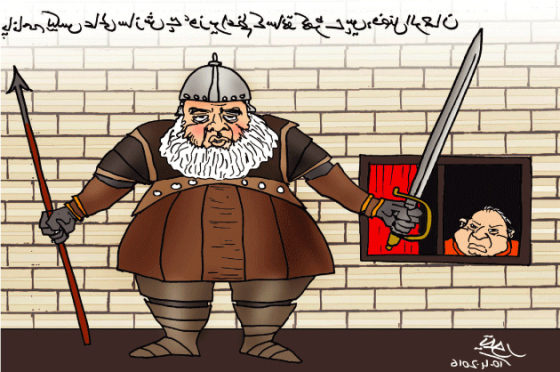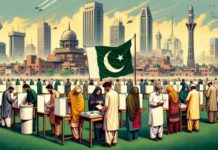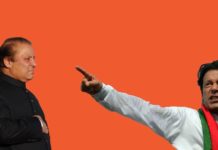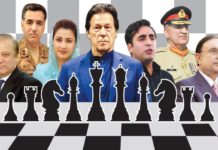THE so-called Azadi March is finally under way in Islamabad. Led by JUI-F chief Maulana Fazlur Rehman, the protest march has already stirred the political landscape of the country. It is the third major agitation in the capital after the PTI and Tehreek-i-Labbaik Pakistan sieges. The latter two achieved little but still aggravated the chronic political instability in the country.
While a debate on the actors and influencers of the earlier agitation movements has eluded our political discourse, a new movement has emerged, which some consider to be a sequel of previous adventures — but with new faces.
No one can one deny the need and importance of political stability, especially when the country is facing a major economic challenge. But political stability cannot be manufactured artificially. Silencing the opposition or critical voices may delay the chaos, but eventually creates a void that extra-constitutional forces want to fill. A desire to eliminate political forces thus will not work in the long run.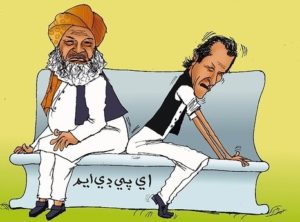
Despite all the efforts made by the establishment to ‘manufacture’ stability and give the impression of a harmonious civil-military relationship, the performance of the PTI government remains unimpressive. Good governance could have averted the prevalent political uncertainty. Instead, the present governance record has fuelled public anger. The maulana’s Azadi March has created space for the voices of dissent, but still could not got unprecedented support from liberal segments of society.
Apart from the theories about the real motives of the march, and the probable support of sections of the establishment, the maulana has capitalised on some relevant factors which are the outcome of recent political developments. The first factor is the divided and under-pressure opposition, the second is the weak performance of the government, and the third constitutes the growing anti-establishment sentiments in the new madressah generation.The corruption discourse
Imran Khan would sincerely hope so. Why would he want to have done to him what he did back in 2014? But he also realises that hope is not a plan of action even though he may not have too many options to play with. Here’s why:
For starters, he does not have the force of narrative with him. ‘My dharna good, your dharna bad’ doesn’t really cut it and those among his party colleagues attempting to pull it off are cutting sorry figures. Now that the maulana is pulling an Imran Khan on Imran Khan, Imran Khan is struggling to boomerang it back on the maulana. Try as they might, PTI ministers and spokespeople just cannot argue against the logic (or the need) for a dharna — at least not with a straight face.
Maulana and his marchers are now in H9. The crowd is big, very big and bordering on huge. How many? Enough to hand Maulana the initiative. What can he do with this initiative? Anything that he wants. And that is the problem. In fact, for the government it is almost an existential problem.
Consider this: in his Friday speech at the dharna, the good maulana handed down a two-day deadline to the prime minister to resign. It is fairly safe to assume that the prime minister will not oblige. What does the maulana do then? Remember, in organising and executing this march, he has expended most of his political capital with almost all the key stakeholders as well as with his supporters.
PML-N and PPP leaders had tried their best to convince him for a delayed date for the march, and the establishment decision-makers had also leaned on him to hold his horses. But maulana was adamant — some say too adamant — to go ahead with the march without any delay. He defied the odds to reach H9 knowing that failure would translate into grievous political harm for him and his party.
And how do you define failure when your sole demand is the resignation of the prime minister? If the PM begs to disagree with this rather inconvenient demand, the maulana — if he doesn’t want failure — would try to force the PM’s ouster. And pray, how does he do that? Of course pull an Imran on Imran and storm the Red Zone.
A massive crowd of tens of thousands of charged men exactly 7km from the Red Zone facing nothing but empty containers constitutes a huge existential problem. The police? Ah, well how many policemen armed with how many batons, equipped with how many tear-gas shells brandishing how many shields do you require to stop the 7km march by tens of thousands of men? 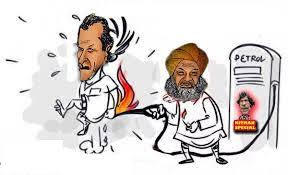
Yes, exactly.
The government’s defence: Well, they signed an agreement with the Islamabad administration that the marchers will not move out of the H9 venue. And if they do so, the law will take its course. Really? With lathis? With tear-gas? Or with something deadlier. Some options — the government knows well after the Model Town incident — are no options.
The dilemma in Bani Gala is getting more acute by the hour. The days for PTI’s inflexible posturing appear to be shrinking fast. If this situation needs to be defused, the good maulana will need something which he can claim as victory and walk away. If he gets nothing except insults, he too may feel squeezed by his shrinking options. The situation should not have come to the stage it is at if the government had acted less arrogantly and more prudently. And yet here we are looking into the barrel of yet another dharna that may unleash yet another round of severe turbulence because yet another set of rulers have convinced themselves they will rule forever.


